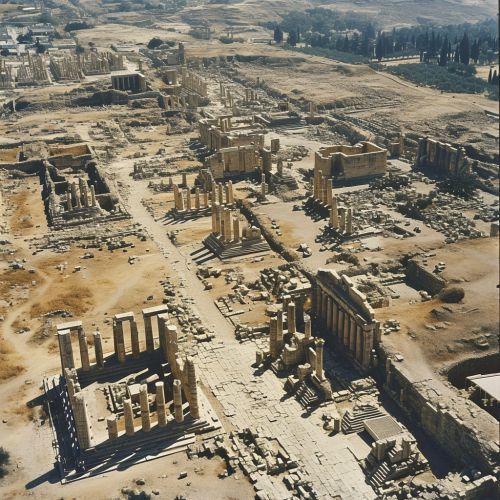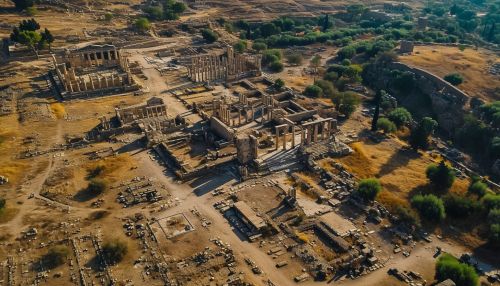Thebes
History
Thebes, known to the ancient Egyptians as Waset, was an ancient Egyptian city located east of the Nile about 800 kilometers south of the Mediterranean. Its ruins lie within the modern Egyptian city of Luxor. Thebes was the main city of the fourth Upper Egyptian nome (Sceptre nome) and was the capital of Egypt mainly during the Middle Kingdom and the New Kingdom. It was close to Nubia and the eastern desert, with their valuable mineral resources and trade routes. It was a cult center and the most venerated city during many periods of ancient Egyptian history. The site of Thebes includes areas on both the eastern bank of the Nile, where the temples of Karnak and Luxor stand and where the city was situated; and the western bank, where a necropolis of large private and royal cemeteries and funerary complexes can be found.


Geography
Thebes is located in the southern part of Upper Egypt, on the east bank of the Nile River. The ancient city was spread out along the banks of the Nile, with the main urban area located on the east bank. The city was built on a bend in the river, which provided natural protection from invaders. The area around Thebes was fertile, with rich soil that was ideal for agriculture. The Nile River provided a source of water for irrigation, as well as a means of transportation.
Architecture
The architecture of Thebes is notable for its grandeur and complexity. The city was home to some of the most important and impressive structures in ancient Egypt, including the temples of Karnak and Luxor, as well as the Valley of the Kings and the Valley of the Queens. These structures were built over a period of many centuries and reflect the evolution of Egyptian architectural styles.
The temples of Karnak and Luxor are among the largest religious buildings ever constructed. The Karnak temple complex, dedicated to the god Amun, is a vast open-air museum and the largest ancient religious site in the world. It consists of a mix of decayed temples, chapels, pylons, and other buildings. The Luxor temple, also dedicated to Amun, was built during the New Kingdom, when Thebes was at the height of its prosperity.
The Valley of the Kings and the Valley of the Queens are located on the west bank of the Nile, opposite Thebes. These areas were used as burial sites for pharaohs and their consorts during the New Kingdom. The tombs are noted for their elaborate decoration, with wall paintings depicting scenes from Egyptian mythology and the afterlife.
Culture
Thebes was a center of culture and learning in ancient Egypt. The city was home to a large number of scribes, who were responsible for recording and preserving the knowledge of the time. Thebes was also a religious center, with numerous temples dedicated to various Egyptian gods. The city's religious significance is reflected in its architecture, with the temples of Karnak and Luxor being among the most important religious sites in ancient Egypt.
Thebes was also known for its festivals, the most important of which was the annual Opet Festival. During this festival, statues of the gods were carried from the temple of Karnak to the temple of Luxor in a grand procession. This event was a major social occasion, with feasting and celebrations lasting for several days.
Decline and Legacy
The decline of Thebes began during the Late Period of ancient Egypt, as the country's power shifted to the north. The city was sacked several times during this period, and many of its monuments were destroyed or damaged. Despite this, Thebes remained an important religious and cultural center.
The legacy of Thebes is evident in its ruins, which are among the most significant archaeological sites in Egypt. The city's temples and tombs provide valuable insights into ancient Egyptian culture and religion. Thebes is also frequently mentioned in ancient Egyptian texts and inscriptions, further attesting to its importance in ancient Egyptian society.
